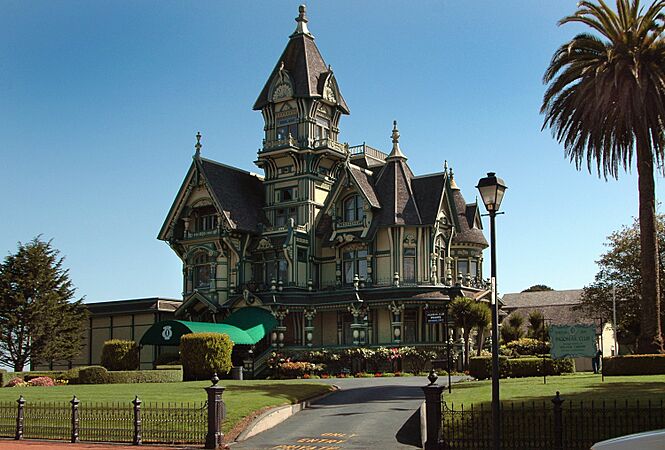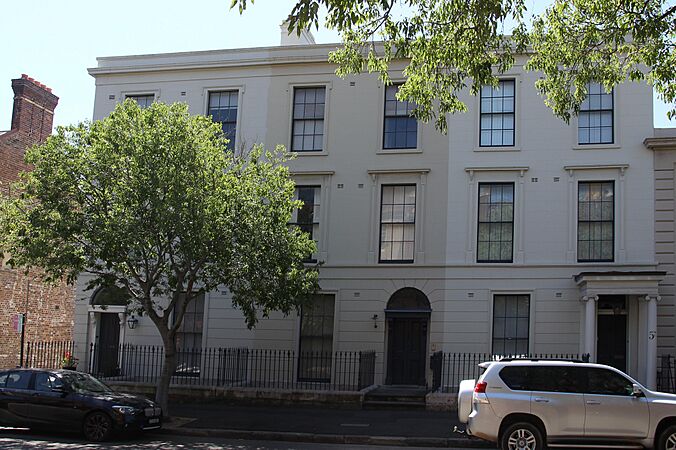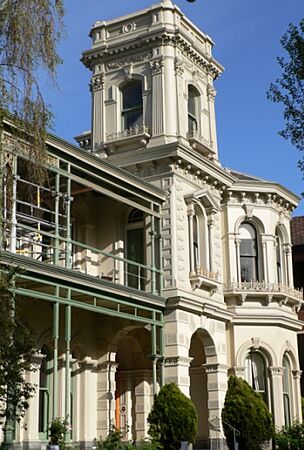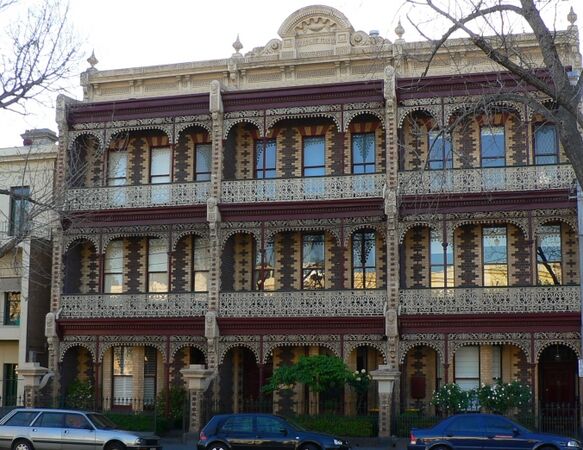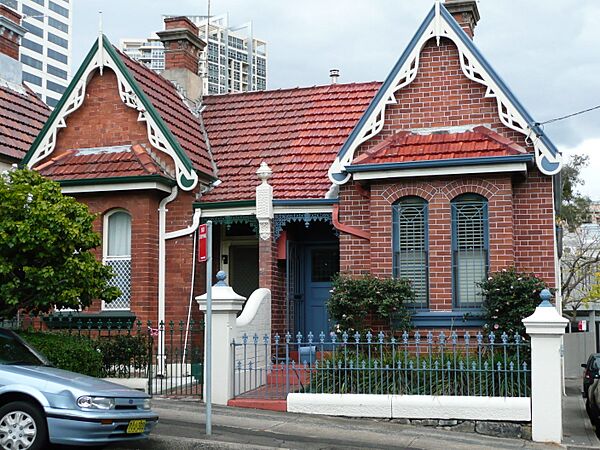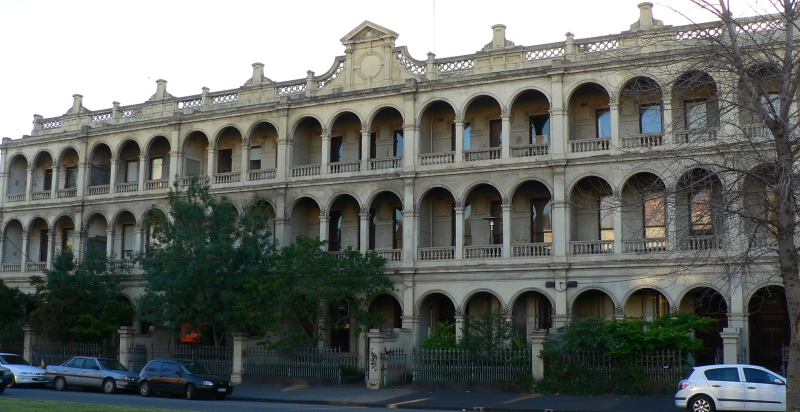Victorian house facts for kids
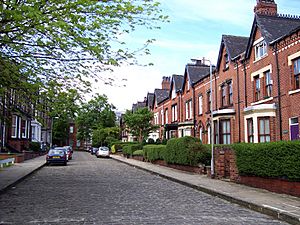
A Victorian house is a home built when Queen Victoria was the ruler of Great Britain. This was from 1837 to 1901. During this time, many millions of these houses were built. They are now a common sight in towns and cities across Britain.
Victorian houses in the United Kingdom came in many different styles. Early homes looked like classical buildings. Later, styles like Italianate and Gothic Revival became popular. Towards the end of the Victorian era, the Queen Anne style and the Arts and Crafts movement influenced house designs. You can also find Victorian houses in places that used to be British colonies, like Sydney, Australia, and Melaka, Malaysia.
Contents
Victorian Homes in Great Britain
At the start of the Victorian era, houses still looked like those from the Regency period. But as people became wealthier, new styles appeared. By the 1850s, the Italianate style became popular. These homes often had stucco (a type of plaster) on the outside. Later, the Gothic Revival style influenced homes. This style added features like pointed porches and bay windows.
What Makes Them Special?
Many things changed how Victorian houses were built. In the 1850s, taxes on glass and bricks were removed. This made these building materials cheaper. Also, the new railway system helped move materials easily. This meant bricks could be made in factories far away and brought to building sites. New building rules also helped improve houses.
Here are some common features of Victorian homes:
- Cleanliness: New rules from the 1850s made sure houses had good drainage and places for waste. Toilets were either outside in a small building or inside the house.
- Water: At first, only some houses had running water. By the end of the Victorian era, most homes had both hot and cold running water.
- Lighting: Many towns had gas lighting from the start of the era. By the end, many houses used gas for light.
- Cellars: Most homes had a basement or cellar. This was used to store coal for fireplaces and to heat water.
- Windows: Homes had Sash windows, but with larger glass panes than older Georgian homes.
- Chimneys: A big brick chimney was a key part of Victorian homes. It included a fireplace inside and a tall chimney stack on the roof to let out smoke.
- Building Style: Most Victorian houses were built in rows called terraces, or as separate detached houses.
- Materials: They were usually made of brick or local stone. Bricks were made in factories and brought to the site.
- Roofs: Most roofs were made of slate, often from Wales and brought by train. Some houses used local clay tiles.
- Gardens: Many Victorian homes had small gardens or plants. People liked having nature close to their homes.
Homes for Everyone
During Victorian times, more and more people moved from the countryside to cities. This was due to the Industrial Revolution. This led to huge building booms in the 1850s and 1870s. Millions of houses were built for rich people, the new middle class, and even the poor.
In poorer areas, Victorian houses were often very small. Some were built back-to-back in very crowded spaces. These areas sometimes became slums and were later torn down. Some smaller, two-story homes (called "two-up two-down") can still be seen today, for example, in Salford, Greater Manchester.
Middle and upper-class Victorian homes often had rooms for servants. Servants did a lot of the work to keep the house clean and warm. These larger homes often followed the popular architectural styles of the time, like the Gothic Revival or Queen Anne styles.
Grand Victorian Homes
The Victorian era was one of the last times many very large homes, known as great houses, were built. Many of these grand homes looked back to older English building styles.
Some examples include:
- Waddesdon Manor, built in a Renaissance Revival style.
- Highclere Castle, which looks like a Tudorbethan manor.
- Penrhyn Castle, built to look like a Norman castle.
- Tyntesfield, designed in the Gothic Revival style.
Victorian Homes in North America
In cities in eastern United States, Victorian homes often have three stories. In western cities, they are usually two-story houses or small one-story cottages.
When people say "Victorian-style house," they often mean a house built during the Victorian era, not a specific style. Many different styles were popular in the United States and Canada during this time. These styles were often borrowed from other countries and historical periods.
One popular feature was the use of wooden "gingerbread trims." These were fancy, decorative wooden pieces used to decorate homes. This style was inspired by European Gothic Revival architecture. In North America, there was a lot of timber (wood) available. With new steam-powered tools, these trims could be made very quickly. This trend started in the east around 1870 and spread west a few years later.
-
The Carson Mansion in Eureka, California, a great example of the U.S. Queen Anne style.
-
The famous Painted ladies houses in San Francisco.
-
A house in Cape May Historic District with detailed wooden "gingerbread trims."
Victorian Homes in Australia
In Australia, eight main styles were popular for homes during the Victorian period:
- Victorian Georgian
- Victorian Regency
- Filigree
- Italianate
- Tudor
- Free Gothic
- Rustic Gothic
- Free Classical
(The Arts and Crafts style and Queen Anne style are usually seen as part of the later Federation period, from 1890 to 1915.)
-
Regency style terraced houses in Millers Point, Sydney.
-
Filigree style terraced houses in Carlton, Melbourne.
-
Semi-detached Rustic Gothic homes in Sydney.
-
Drummond Terrace in Melbourne, built in the Free Classical style.
See also
- Victorian architecture
- List of house styles


